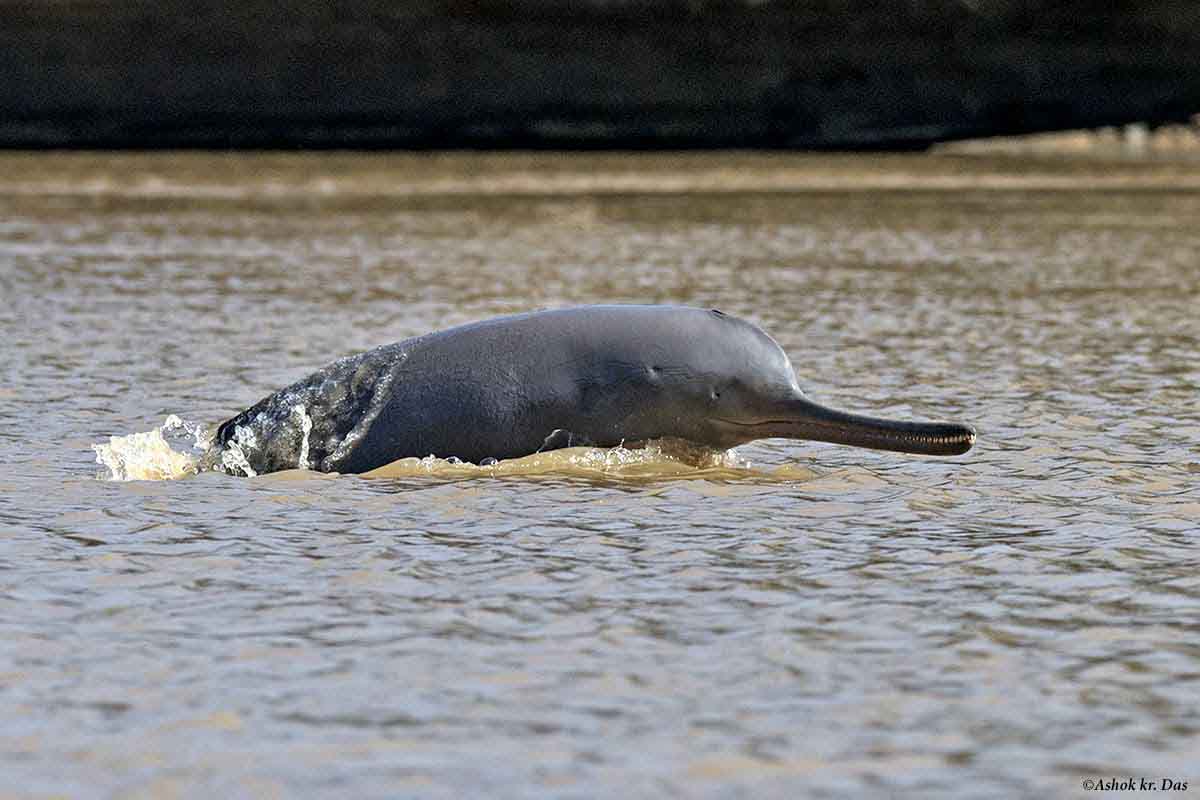Yogi declares Gangetic Dolphin UP’s aquatic animal
Uttar Pradesh Chief Minister Yogi Adityanath on Friday declared the Gangetic Dolphin state aquatic animal.
This is the second incident of the death of a dolphin within a 10-month period in the upper Gangetic basin here.

The upper Gangetic stretch is known for fresh water dolphins. (Image: Facebook/@Ashoks-Wildlife-Photography)
A Gangetic dolphin was found dead in river Ganges near village Narora of district Bulandshahar on Friday. These are highly endangered and are also the National Aquatic Animal of India.
This is the second incident of the death of a dolphin within a 10-month period in the upper Gangetic basin here. This is concerning for the forest officials as PM had announced on August 15 this year that the conservation of Gangetic dolphins would be done on the lines of Project Tiger.
The deceased dolphin was a young female, informed NK Jaanu, Chief Conservator of Forest, West zone adding that she was two years old, weighed 41 kg and was about 1.41 meter in length.
Advertisement
Her viscera has been sent to a lab for further examination after which the actual reason for her death would be known, said the chief conservator. However, the initial examination suggests that she died of some infection, he added.
When the information of the death of a dolphin reached the forest officials, Divisional Forest Officer (DFO) of Bulandshahar Ganga Prasad reached there along with a veterinary officer and forest officials. The dead dolphin was somehow pulled out of the river after which the postmortem was conducted.
The upper Gangetic stretch is known for freshwater dolphins. It has rich biodiversity and hence provides a favourable habitat for aquatic life, particularly dolphins which are found here from Bijnor to Narora barrage. According to the latest survey of the forest department along with WWF India, there were 36 dolphins in this 176 km stretch of Ganges.
Prior to this incident, in January, an adult male dolphin was found dead near village Jora Jalalpur of Hastinapur area in district Meerut.
In 2009, Gangetic dolphins were declared as the National Aquatic Animal of India.
Freshwater dolphins are highly endangered and found in just four river systems of the world including the Ganges. They are also found in Amazon (USA), Indus (Pakistan) and Yangtze (China). They are almost extinct in China. Here in the upper Gangetic basin, they are called ‘Soos’ because of the whistling sounds they make. They are mammals and give birth to calves. These dolphins are different from marine dolphins as they are blind by birth, have a greyish body and a long snout.
These dolphins can differentiate between light and dark only and swim using a sonar system. Synthetic net, pesticides used in riverbank farming, poaching for its blubber, pollution in river and sand bars are some of the threats faced by the river dolphins here.
The sincere conservation efforts had resulted in declaring over a 100 km stretch between Bijnor and Narora barrages a Ramsar site, the first in UP. Ramsar sites are wetlands of international importance. In 1971, a convention was held in Ramsar, Iran on the conservation of wetlands and water bodies.
Advertisement